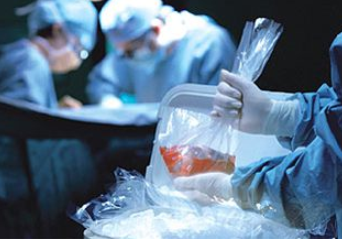Release date: 2017-11-30

With the advancement of science and technology in all aspects, the choice of organ donors will become more and more abundant, limiting our imagination.
Recently, the controversial “head-changing†has made new progress: It is said that Italian and Chinese medical scientists cooperate to connect the head of one body with the spine, blood vessels and nerves of another body. Italian neuroscientist Sergio Canavero said that this means that it is a step closer to human living head transplant surgery.
Skull transplantation can be said to be an extreme example of organ transplantation. The earliest successful organ transplants took place in 1954, and today, for some patients with organ failure, transplantation is the ultimate treatment option. Although the success rate of organ transplantation has been increasing in recent years, the shortage of organ donors is still a problem faced by countries all over the world. To this end, researchers in various disciplines such as medical scientists, materials scientists, and geneticists are seeking organ donors other than humans themselves. At present, the more mature "blueprints" of organ sources include xenotransplantation, 3D bioprinting organs, stem cell regenerative organs, and so on.
Xenotransplantation refers to the transplantation of organs cultivated in one animal into another. The organs cultivated in the animals are covered in the human stem cell environment, and the new organs developed can be accepted by the human body without causing excessive rejection. However, xenotransplantation has a fatal problem: cross-species virus infection. For example, in the 1990s, medical experts discovered that pig cells, tissues and organs carry porcine endogenous retrovirus (PERV), which poses a potential health risk to humans. Direct implantation of pig organs into the human body may lead to the spread of new diseases and cause public health events.
The good news is that this issue has been overcome. Not long ago, researchers from the United States, China, and Denmark teamed up to use gene editing technology to inactivate the PERV virus in pig organs, which in turn prevented its cross-species transmission, which attracted widespread attention from the international community. The transplantation of heterogeneous organs such as pig organs has also taken a big step forward.
Medicine is one of the key areas where many people expect 3D printing to “take rootâ€. At present, printing human tissue using "bio-ink" containing living cells is not a problem, and many laboratories have mastered 3D printing of heart muscle. Some experts believe that the most complicated part of 3D printing organs is the printing of capillaries. The second is how the printed organs can simulate the functions of human organs to the greatest extent and carry out complex biochemical reactions.
The use of stem cells to repair human organs has also made great progress. Since 2014, the Chinese medical team has successfully processed stem cells extracted from patients to help patients repair damaged endometrium or spinal cord. Scientists say stem cells are like seeds and can grow out of organs and even the entire body. If humans master the method of regenerating organs from stem cells, they can be transplanted into the body to overcome many stubborn diseases.
Up to now, more than 600,000 transplant recipients of heart, liver and kidney have been accepted worldwide. According to incomplete statistics, about 2 million people in the world need organ transplants every year. However, data from the World Health Organization show that the global average organ supply-demand ratio is 1:20 to 1:30. In the United States, for example, the number of patients waiting for organ transplants is currently 120,000. However, there are only 30,000 successful organ transplants each year. It is estimated that in 2016, 22 patients die every day while waiting for an organ transplant.
Human exploration and progress in organ transplantation will bring about a qualitative improvement in human life and quality of life. With the advancement of science and technology in various fields such as surgical medicine, genetic engineering, and immunology, the choice of organ donors will become more and more abundant. We will find that only our own imagination is limited.
Source: People's Daily
Ganoderma lucidum extract,Senna leaf powder,Fritillaria Extract
Fufeng Sinuote Biotechnology Co.,Ltd. , https://www.ffsinuoteplant.com